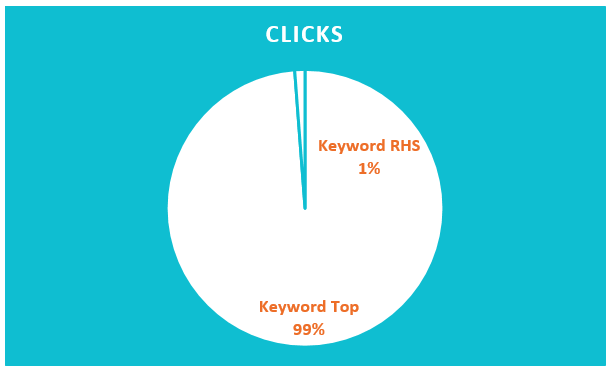Google’s Latest Change Likely Not All that Dramatic for Paid Search Advertisers
Google doesn’t take large-scale decisions lightly. Google’s move to remove side ads in desktop search results comes after a lengthy testing period. The search giant has been testing this since 2010 (not a typo). While Google continues to eat away at organic search results’ real estate above the fold, advertisers will always have space. The recent announcement, while significant, will not have a significant impact on the majority of paid search advertisers.
Well-run accounts simply won’t have many keywords regularly appearing below position 4.0. Sure, some keywords require a lower position in order to be profitable; however, if the majority of your keywords need to be in poor position to be profitable, paid search may not be the right channel for your business.
For businesses where paid search makes the most sense, you want as much traffic as possible. You beg for more search volume and users demonstrating intent. There is a reason Alphabet is the most valuable company in the world: its advertising works. Advertisers should want to saturate their core terms, increase their position, and get as much traffic as profitably possible. Side ads simply don’t get the requisite traffic. Looking at all of Obility client accounts across 2015 — over 100 million paid search impressions — this holds true. Our clients prefer top position. Only 15% of keywords and 12% of keyword impressions have an average position above 4.0.

However, this is only telling a small part of the story. Average position is exactly that, an average. Even keywords with an average position of 5.0 or higher will occasionally appear at the top of search results (Top) rather than the right hand side (RHS). To get the full story, you need to look in Google Analytics ad slot reports and analyze from where clicks are coming. Often you’ll see something like the pie chart below where the vast majority of visits to your site from paid search come from when your ad appears in the Top slot (top 3-4 ads). In studies, users have been shown to click on Top ads more than ten times as often as RHS ads. Your traffic is going to come when you’re in the Top slot.

All Signs Point to Normal
Long story short, Google has been running this test for awhile and the significant majority of your traffic is already coming from the Top slot. Not a lot is likely to change by removing the right hand side ads. If not a lot is going to change, why is Google making the change?
As always, the answer is money. Google may argue they are looking to create a cohesive experience between mobile and desktop. That may be true, but there is little chance Google makes this change if it’s a money loser. In studies 40%+ of searchers cannot tell the difference between organic and sponsored search results when the right hand side is removed. By removing the right hand side, searchers may be more likely to click on the top results. Google knows this answer, and it also knows how showing Top only ads creates more profitability. They have done the research.
For the top 80-90% of advertisers, the change will have limited effects – likely less effect than past changes. Cost per click has steadily risen in the last few years, most notably in branded queries, and CPCs will almost certainly continue to rise. At this point, most advertisers are used to it, and the best ones continue to be profitable from paid search. This change may squeeze out some of the small players from highly commercial keywords, but this again continues a long-standing Google trend. Nothing new.
Google advertising is light years beyond the wild west days of 15 years ago. Joe Basement is no longer able to buy top commercial keywords, send users to an affiliate site, and roll in the dough. Paid search is a mature medium. Well known brands creating well known products dominate the search results. Movement away from side ads is consistent with paid search’s maturation.
